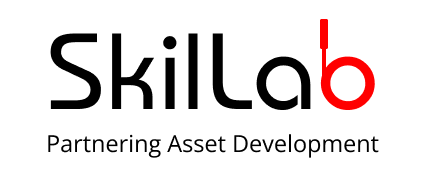India’s job market is thriving with over 12 to 15 million job seekers entering the workforce each year. This rapid growth has opened the floodgates for something far more dangerous: fake job profiles.
If you take a look at surveys, a 2023 report by the Indian Staffing Federation revealed something shocking! Nearly 30% of resumes in sectors like IT, banking, retail, and gig work contain falsified information. That adds up to a staggering ₹15,000 crores ($1.8 billion) wasted annually on bad hires.
Add to that a 17.4% unemployment rate among graduates, and you have the perfect storm. Desperate candidates and organized fraud rings are now using AI, deepfakes, and even shell companies to game the system.
Let’s break down how this scam works, what’s at stake, and how modern recruiters can fight back.
How Fake Profiles Are Made- The Anatomy
Fake resumes aren’t what they used to be. We’re no longer talking about minor exaggerations or puffed-up job titles. Today’s fake profiles are created using tools and tactics that make even experienced recruiters pause and think.
Let me help you understand how these fake profiles are made.
Fake Companies & Training Centres
Some training centres are pretending to be real employers. They create fake job offer letters, pay slips, and even fake references. Hard to believe, right? But this has become a common practice. Why you wonder?
They do this to make someone look like they have job experience, even when they don’t.
AI-Written Resumes
Some tools can now make resumes that are full of the right keywords and have the perfect format. These can pass through Applicant Tracking Systems (ATS) with ease, often ranking higher than genuine candidates.
Deepfake Interviews
Scammers nowadays use smart tools to copy real people’s faces and voices in online interviews. These fake videos can copy how someone moves their eyes, talks, and shows emotions.
If a recruiter doesn’t watch closely or skips the live interview, the scammer can get through and pretend to have skills they don’t really have.
Education Fraud
Counterfeit degrees from unaccredited or entirely fake institutions are now being mass-produced and sold online. Some even come with forged transcripts, accreditation seals, and fake alumni networks.
These documents can appear legitimate at first glance, but closer scrutiny often reveals mismatched logos, inconsistent formatting, or unverifiable university records.
Collusion with Real Employees
A disturbing trend is the “experience rental” industry, where legitimate professionals allow fake candidates to use their current job credentials for a fee. Don’t get surprised, this is the real world!
This includes sharing login access to company portals, collaborating on real-time calls, or even attending interviews on the impostor’s behalf. It’s a growing black market that compromises not just hiring processes but also internal company data and security.
Fake profile isn’t just about finding a job, it’s a serious kind of identity fraud. Scammers carefully create fake people to trick even skilled recruiters. What used to be rare is now growing fast and threatening the integrity of entire recruitment ecosystems.
Why Recruiters Can’t Afford to Ignore Fake Profiles
For recruiters, fake job profiles are more than a nuisance as they can hurt their reputation, delay hiring, and affect business success.
If a fake candidate gets hired, it slows down the process and makes others lose trust in the recruiter.
Over time, these fake profiles can damage a company’s brand, lower team morale, and harm relationships with clients.
Critical Time Lost
On an average, recruiters spend more than 48 hours per week screening and interviewing candidates. When nearly a quarter of that time is wasted on fake profiles, the impact is significant; especially for roles that are critical and time-sensitive.
Financial Consequences
Now, consider a scenario where 1% of a 5000-candidate pool turns out to be fake, that’s a ₹1 crore annual hit in direct costs. When you add things like training, pay, and people quitting, each bad hire can waste ₹15,000 to ₹20,000 more.
Professional Ramifications
The moment a fake candidate makes it past your filter, it casts doubt on every future hire you recommend. This loss of trust is quiet but harmful. It can hurt team spirit, lower confidence from others, and damage client trust in staffing agencies.
Legal Risk
Hiring someone with fake papers or a false identity can break rules and cause data security problems. It’s even worse if the fraud affects clients or involves private information, leading to serious GDPR issues.
How To Detect Fake Profiles
You don’t need to be Sherlock Holmes to identify fake profiles! However, you do need to be vigilant.
Here are a few red flags that should always prompt a deeper check:
Resume Inconsistencies
- Suspicious employment gaps or timeline overlaps
- Skills-job title mismatches like a resume of “Full Stack Developer” with missing frontend experience
- Absence of critical education details or graduation passing years
- Undergraduates claiming positions at Tier-1 companies that typically require specific academic credentials (continuous) education, 12+4 year degrees, or Honours)
- Incorrect notice period claims (stating 1-month when Tier-1 Indian IT services require 3 months)
- Unexplained long gaps between education and first employment
- No certifications or self-learning evidence supporting technical expertise in first role
Critical personal details omitted from resume
Questionable Credentials
- Degrees from unaccredited or notorious institutions. Contact Us to know more.
- People applying for technical jobs with unrelated degrees like a Data Engineer with a B.Com, or a Python or Power BI developer with a B.A. or B.Com. This may raise red flags if they don’t have extra proof like internships, certificates, or self-learning records to support their skills.
- Suspiciously comprehensive skills for entry-level positions
Digital Red Flags
- Overly perfect resumes should be your first hint! Entry level Java Developer talking about experience of an Architect level skills? Come on people! Be realistic!
- Multiple identical profiles from the same organization applying for the same role
- Job board profiles with very high views or downloads, especially after a recent resume update, can be a warning sign. For example, if a profile gets thousands of views and hundreds of downloads right after changes, it may seem suspicious.
- When a candidate’s work location doesn’t match their employer’s location, or they can’t give clear location details, it can be a red flag. I would like to share a very recent example here. There was an employee who was actually living in Hyderabad but lied to the recruiter, claiming that he was working from the company’s Mumbai office.
- To verify his claim, the recruiter asked him to share the address of the Mumbai office. But when asked, the employee fumbled and couldn’t answer confidently.
- Some candidates avoid face-to-face interviews or live tests, which can be a warning sign. In IT roles, they may skip coding tests or video calls, and in non-IT roles, they may refuse in-person interviews.
Missing Digital Footprint
- Minimal LinkedIn connections or engagement
- Absence from relevant professional platforms (GitHub for developers, social media for marketing roles, likewise)
- Employment at companies without verifiable digital presence, companies not having websites or ROC registrations
Now that you are aware about the Red Flags of fake profiles, let’s dive further to understand the verification strategies.
Protecting Your Recruiter Image
To protect your hiring process, your team, and your company’s reputation, you need to approach this issue like, a cybersecurity threat.
Ask Job Portals to Be More Transparent About Fraud Detection
Most recruiters rely on popular job boards to find talent, but very few of these platforms explain how they screen for fake profiles.
So, start demanding answers like:
- Do they have systems in place to detect duplicate resumes or suspicious activity?
- Can they alert you when a profile looks suspicious?
- Are they actively removing proven fake profiles?
By putting pressure on job platforms to share their fraud detection practices, we can all help raise the bar for the industry.
Invest in Tools and Training for Your Recruiting Team
Fake resumes are getting harder to spot, especially with AI now creating them. That’s why your hiring team needs the right tools and training.
Start with making use software like GPTs that checks for errors, copied content, or resumes that sound too perfect.
You can also teach recruiters to spot signs of fake profiles, like missing info, strange job timelines, or very basic wording.
Furthermore, gather your team and share real examples and run practice checks to help them get better.
You are being one step ahead when training your team to fight fraud!
Build a Clear, Step-by-Step Internal Verification Process
You wouldn’t onboard a vendor or contractor without doing due diligence, so don’t skip that with candidates either!
Let’s create a Standard Operating Procedure (SOP) for candidate verification that’s followed every time:
- Be careful when checking physical resumes. Use the points mentioned above to help you review them properly.
- Check education credentials through verified databases like the National Academic Depository.
- Always validate technical certifications with issuing organizations.
- Add mandatory reference checks with specific, thoughtful questions.
Final Thoughts: Stay Sharp, Stay Human, Stay Ahead
Fake profiles are more of a warning sign than a hiring problem. As tech grows, so do the tricks people use to fool the system.
But here’s the good news: recruiters who learn, adapt, and use smarter tools can stay ahead of these scams.
The more seriously we take this issue, the more we protect trust, and that’s what matters most!
As we all recruiters believe, hiring isn’t just about filling jobs. It’s about finding real people for real purpose.
And that starts with keeping things honest.
Ready to elevate your hiring strategy? Let’s start the conversation now!




